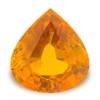Glittering Stones » Gemstones & Diamond books » Nitze Gold Mining in North Carolina
Nitze Gold Mining in North Carolina

Book Name: Gold Mining in North Carolina
Author: Nitze
Published: 1897
Refer More Information About McCarthy Books
Nitze Gold Mining in North Carolina
The gold fields of the Southern Appalachians are situated in the area of the crystalline rocks extending from the vicinity of Washington in a general southwesterly direction, through, the piedmont and mountain regions of Maryland, Virginia, -iSTorth Carolina, Tennessee, South Carolina, Georgia, and Alabama, to the vicinity of Montgomery.
The greatest width of the belt, as a whole, is attained in North Carolina, South Carolina and Georgia, where it is from 100 to 150 miles, narrowing down in Virginia and Maryland on the northeast and in Alabama on the southwest . In chapters III and IV the gold-mining counties of these States are given.
The general term crystalline rocks includes gneisses, argillaceous, hydro-micaceous, chloritic, siliceous and other schists and slates, limestone, granite, diorite, diabase and other eruptives, as well as certain volcanic porphyries, etc., and pyroclastic breccias. The age of these rocks is Archaean, Algonkian, and possibly in part Paleozoic. On the east they are covered by the Coastal Plain and in places by small patches of the Jura-trias (Newark), which latter also occur within the area in small isolated basins, notably in Virginia. On the west they are bordered by the Paleozoic rocks. The rocks of the gold belt are decomposed to depths often reaching 50 and 100 feet. Mr. Becker has proposed and used the term "saprolite," 1 signifying literally "rotten rock," as a general name for such thoroughly decomposed, earthy, but untransported rock.

NOVEMBER BIRTHSTONE - CITRINE

COMMEMORATIVE EVENT - 13th Anniversary
KEYWORDS - Success, Abundance, Personal Power
ALSO KNOWN AS - Merchant's stone, Success stone
COLORS - Pale yellow to brown
OCCURRENCE - Brazil
COLOR ZONING - Tiger stripes or Zebra stripes


